
I dont get it, he said the same sentence again.
Great leader has mandated all must be implanted with explosive chip at base of the spine. The AM radio isn't just transmitting the national anthem is also a proximity kill switch.
Since we are talking hypotheticals, an ideal scenario would be a nearly completely renewables approach where each household is its own self contained energy production center equippef with solar arrays, wind turbines, thermoelectric generators. Various means of production. And have either propane or diesel generator as a backup. You know your average overall watt-hour usage for the household and try to have enough battery capacity to satisfy it for a week or two of bad weather.
Most household electrical wiring is redone for DC transmission and all consumer appliances possible are run straight on DC for optimal efficency. Energy efficent heat pumps for cooling and heating. energy efficent cooking appliances like induction heaters. Electric cars that act as backup battery banks would be awesome.
Industrial zones would be much harder as you need huge solar panel or wind turbine arrays to get the megawatt and gigawatts needed to run a factory. Most factories are decades old running on the most energy ineffient assembly lines you can think of. A energy mandate that calculated and taxed total energy efficency compared to national average for factory size and the would be a start.
Humanity simply does not "stop" because we go through an energy crisis. We did fine enough before the industrial revoltion and renewables + energy efficent consumer devices have improved a bunch. The economy would tank and what renewable energy made would be a premium commodity and the system would adapt to use it best as possible. But things would go on.

The orb v3 from vgoodiez, Goo-Roo hookah hose, arizer extremeq desktop vape and omega wand from DDave.
Here's a YouTube video of it in action
You are welcome. Yes thats absolutely what it means if you read the fine print of ecosia they tell you how they collect your data including IP address+ search terms and share it with google and Microsoft's ad network to show you ads through ecosia. So your data is still coming back google and Microsoft to be sold to the highest bidder. Everyones gotta get a cut profititing off your data, except for you. At least a small bit of that profit goes to the trees I guess.
Here's my guide to alternative search engines that discusses all the different search engines and how they differ under the hood. I wrote it to be understandable to everyone not just tech nerds.
Ads aren't a thing in my life. On the off day I have to visit someone who lives with ads and suffer through one or two I tough it out, or look at my phone, or do something different.
I don't watch live TV. I dont pay for any subscription services except phone service and internet data. I watch YouTube content that has the ads stripped out. I download youtube videos that get often rewatched to hard drive. For movies I buy DVD that can have the drm stripped out.
I play good video games preferably drm free (steam is the one service I can't really give up easy, but it has offline mode and the deck so praise gaben!). I read e-books that are drm free. I have a mp3 player downloaded with all my music drm free.
The better question is, why are you willing to live with ads at all? Assuming you are in control of your living situation and have the power change whats shown on tv or played through speakers.
Why would you tolerate being constantly bombarded with manipulative messaging by companies, political canpaigns, and all the other powerful groups who want to affect he masses for their benefit?
Why is it so hard just say no? To give up the forms of toxic entertainment delivery? Why can't you sacrifice ease and convinence and familiarity to regain some control overhow your attention is spent during free time?
If you like something, buy it and really take the steps to own it physically.
The digital manifestation of the ghost in the machine. It likes playing with the bits that line occupies when you aren't looking. Don't touch its line.
I agree that oil capsules are the way to go for dosing precision and general healthiness. I like oil caps the most out of all edibles simply because you can lock in a approximate amount needed to get you medicated. Not requiring further cooking or excess calories is a bonus.
To answer your question abiut dosing vapor, I can give some insight as a vaping nerd.
Just to be clear I mean dry herb vaping where the raw cannabis flower is baked at a temperature hot enough to vaporize the plant oil with all the good cannabinoids but not hot enough to burn or combust the flower. This method is much cleaner than combustion smoking while avoiding the possible synthetic additives in cartridge vapes.
When it comes to vaping theres two paths users tend to head down. One common path is thst you just quit combustion smoking and want to emulate the experience of smoking as closely as possible. Big milky vapor clouds filling your regular sized bongs and exiting your lungs in a huge rip. This path leads towards the natural conclusion of expensive ball vapes and burning through zips a week.
More experienced vapor heads realize another path. You don't actually need all that much vapor to get baked, especially with good flower. So you go for maximizing your herb efficency by trying to get every bit of vapor out of a very small amount of herb These are the crowds that actually take dosing seriously even using measuring spoons and stuff. This path is most commonly followed by half bowl dynavap users, but there are many microdosing options.
Here are three different bowl sized.
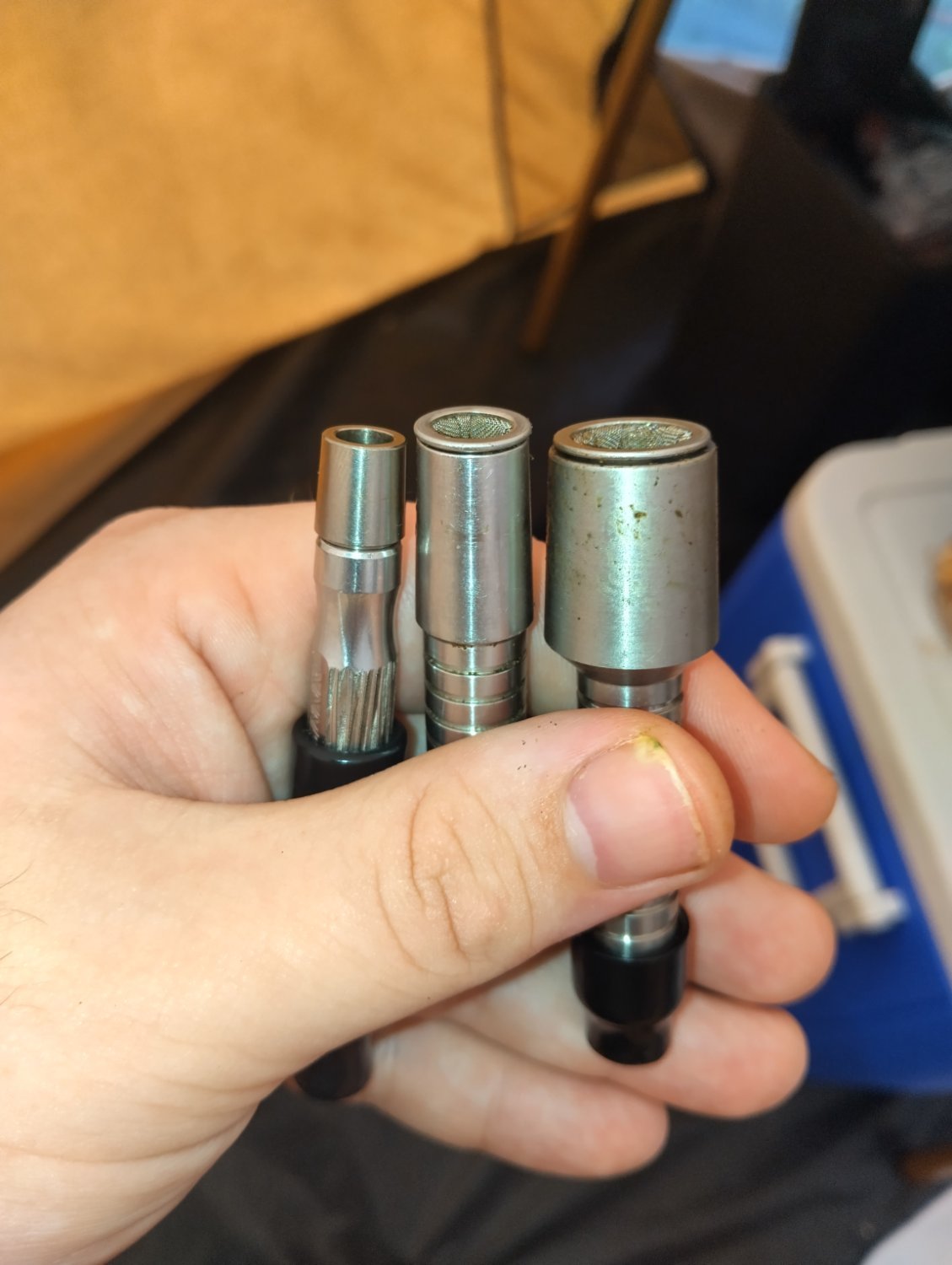
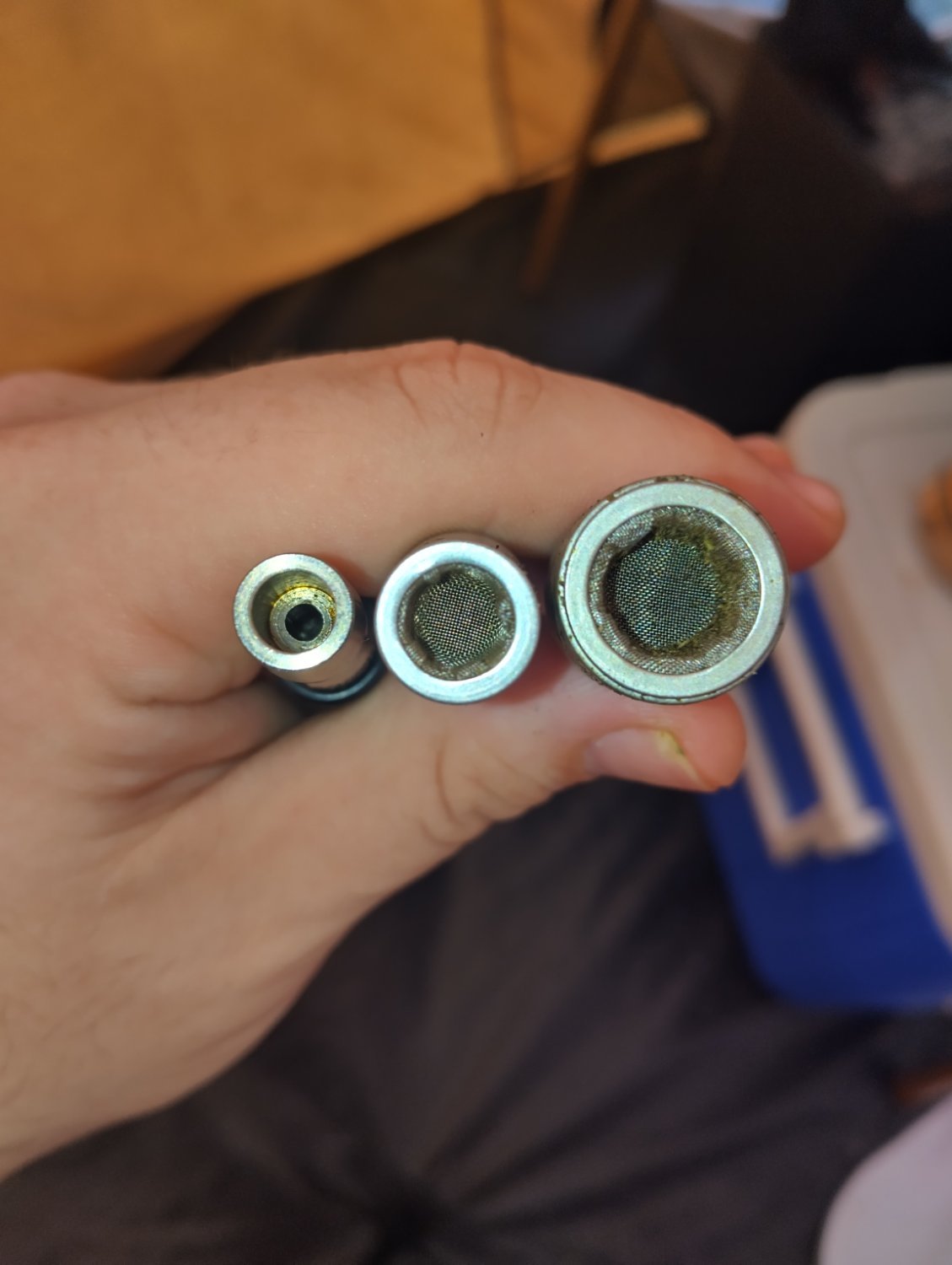
I can't tell you exact numbers but spitballing the biggest bowl probably holds .15-.20g, the middle one holds .10g and the teeny tiny one .05gs. How these get used depends on flower quality. If I'm vaporizing top tier ganja Its easy to get medicated and I want to stretch it out with the small or middle bowl sizes. If I'm vaporizing lots of cheap mid or shake I'm going for the big bowl.
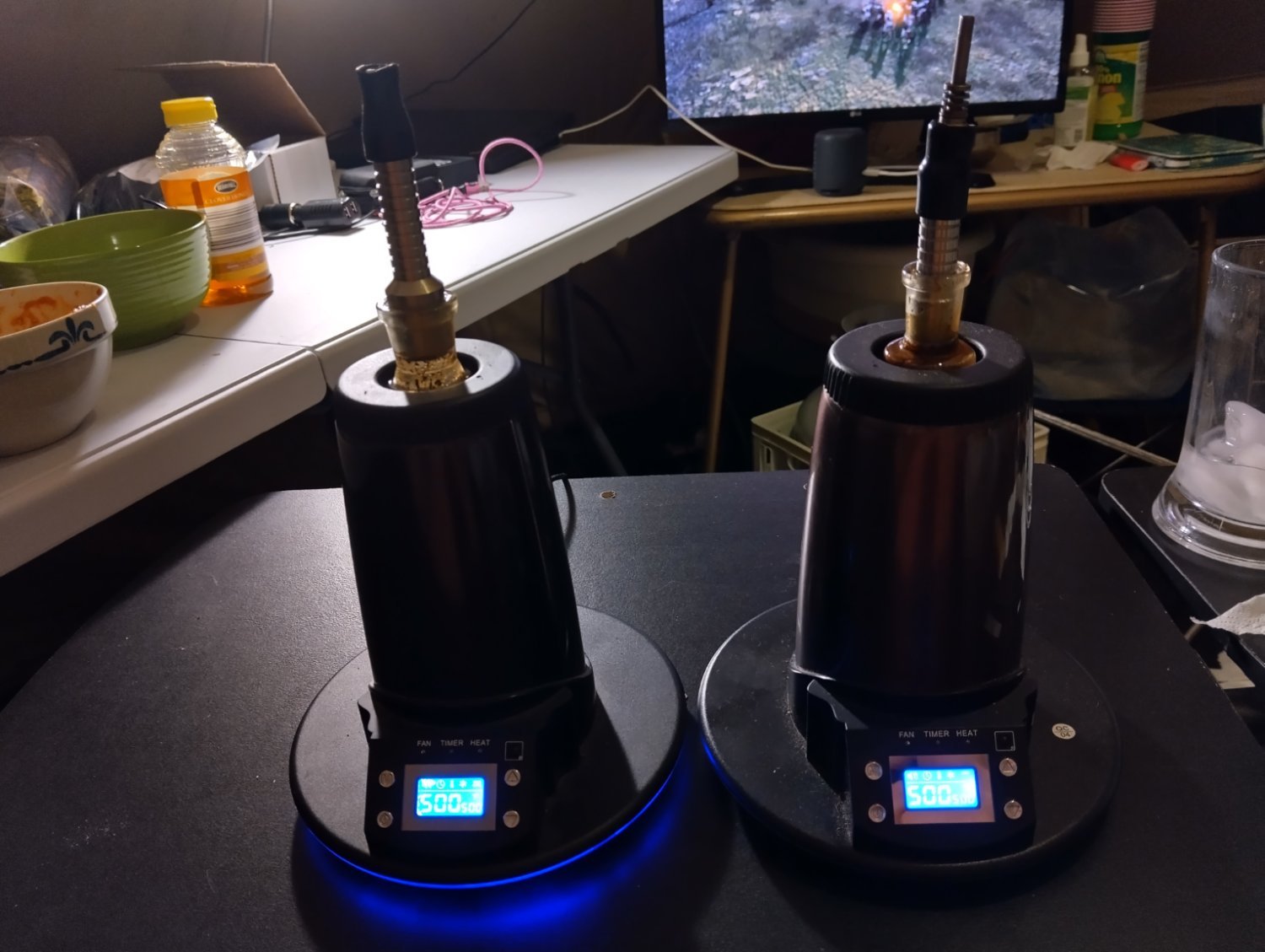

If your device happens to be 18-20v you can get a usbc-pd laptop connector with a dc barrel jack output. It has the USBC-PD chip built into it to tell the charger to output 20v and you can probably hunt down barrel adapter bits. Your regular 65-100w rated usbc cord plugs in like anything else.
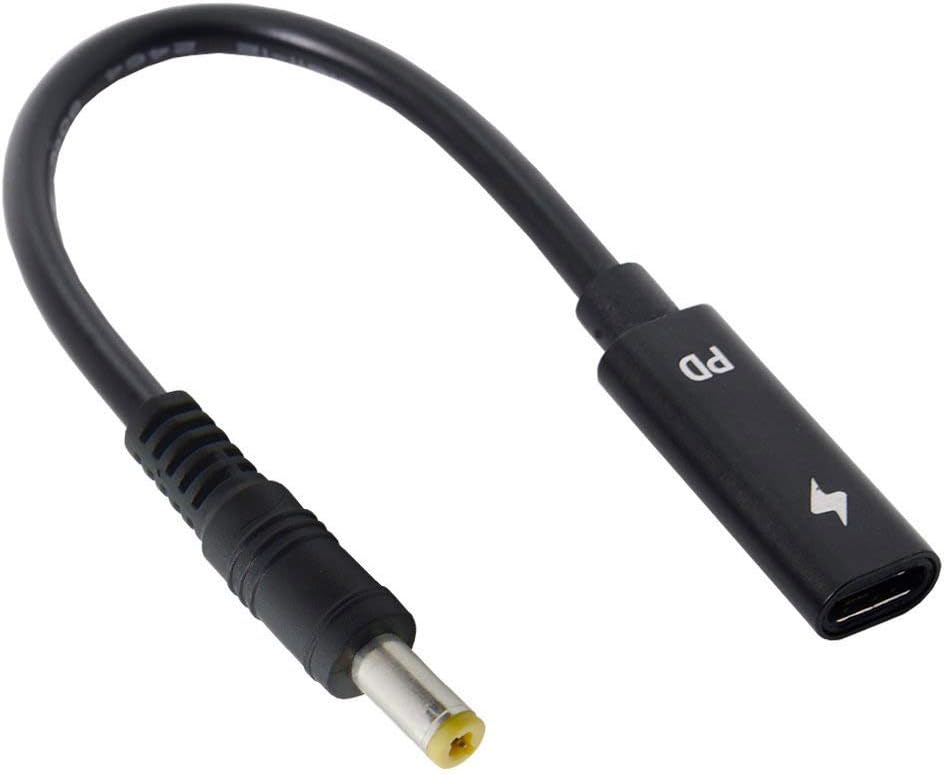
The other voltages are tough theres not really a consumer market for 15v or 9v specific usbcPD to barrel things.
Hey entropicdrift good question. Those kinds of lanterns are expensive and complicated electronics with a definitive life expectancy. The lantern you linked is over 20$ for a single unit.
Most of those kinds of lanterns use a non replaceable rechargeable lithium battery built inside it that will only last about 500 charge cycles give or take before degrading. That is, if you are lucky and one of the other cheap mass produced quickly assembled electrical components doesn't fry first.
In the long term I deem its more cost efficient to take a page from the home lighting industry. Simply create a light fixture with easily and cheaply replaceable bulbs. A pack of 4 12v-24v bulbs cost less than that lantern and I like the warm lighting.
Its also a simple matter to convert any lamp fixture into one that can interface with my power system. Cut off the AC plug and replace it with a male cigarette plug. The trick is knowing thst you have to buy the right kinds of bulbs.
So when the 12v led bulbs do eventually burn out its a cheap single 5$ bulb that and a minute to replace it. I would rather put a broken bulb than yet another expensive lantern in the landfill.
Apotential benefit if I choose to power it with usbc-pd instead is variable dimmable lighting based on voltage level if the bulb is 12-24v.
Hey aubeynarf think you are talking about something like this.
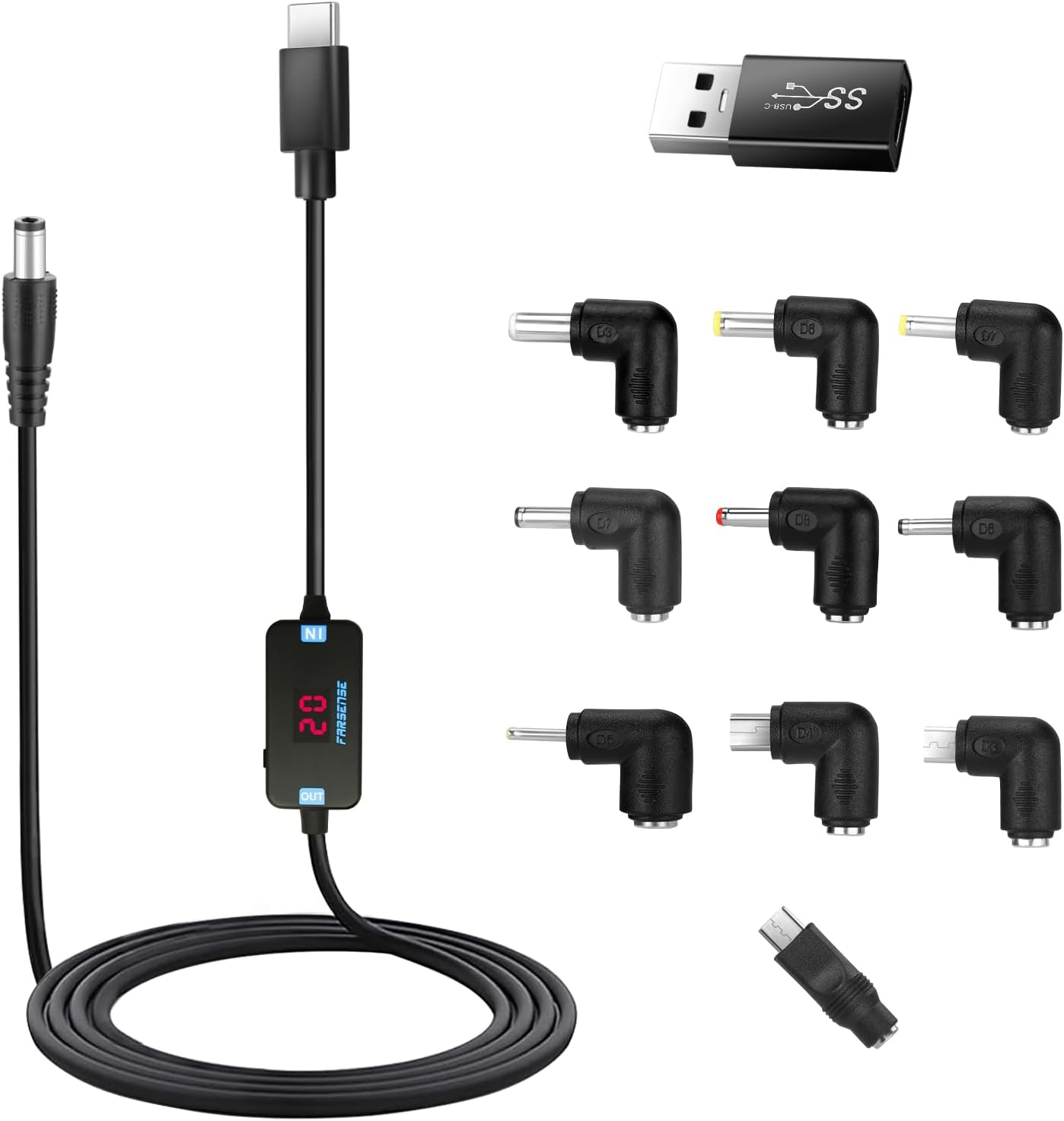
Its a special usbc-pd to 5.5x2.5 barrel jack with manually selectable voltage. You just plug it into a pd charger and select the voltage of the device. The rest is finding a barrel plug to barrel plug adapter that plugs into your device. Hope this helps.
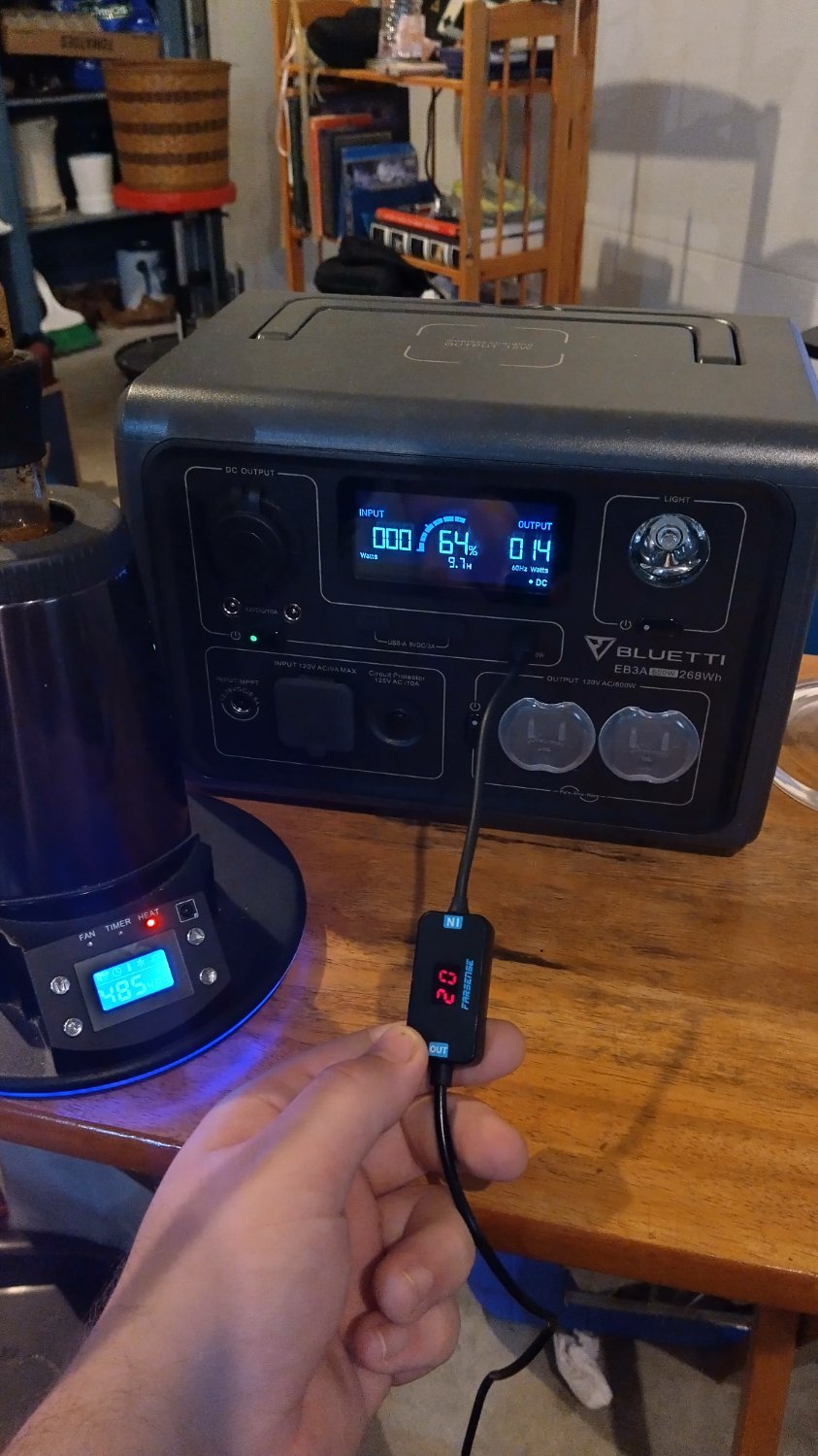
Hey there panicnow! I would be happy to help give some input. It is better to avoid firing up the AC inverter whenever possible. If you have a car travel adapter for your devices that plug into the jackeries cigarette plug port that would be better. If you absolutely need more usbc-pd ports for your devices, there is a way to do that given your jackary has one or two of those circular barrel plug outputs that output 12v. Most powersttions should have one or two of them.
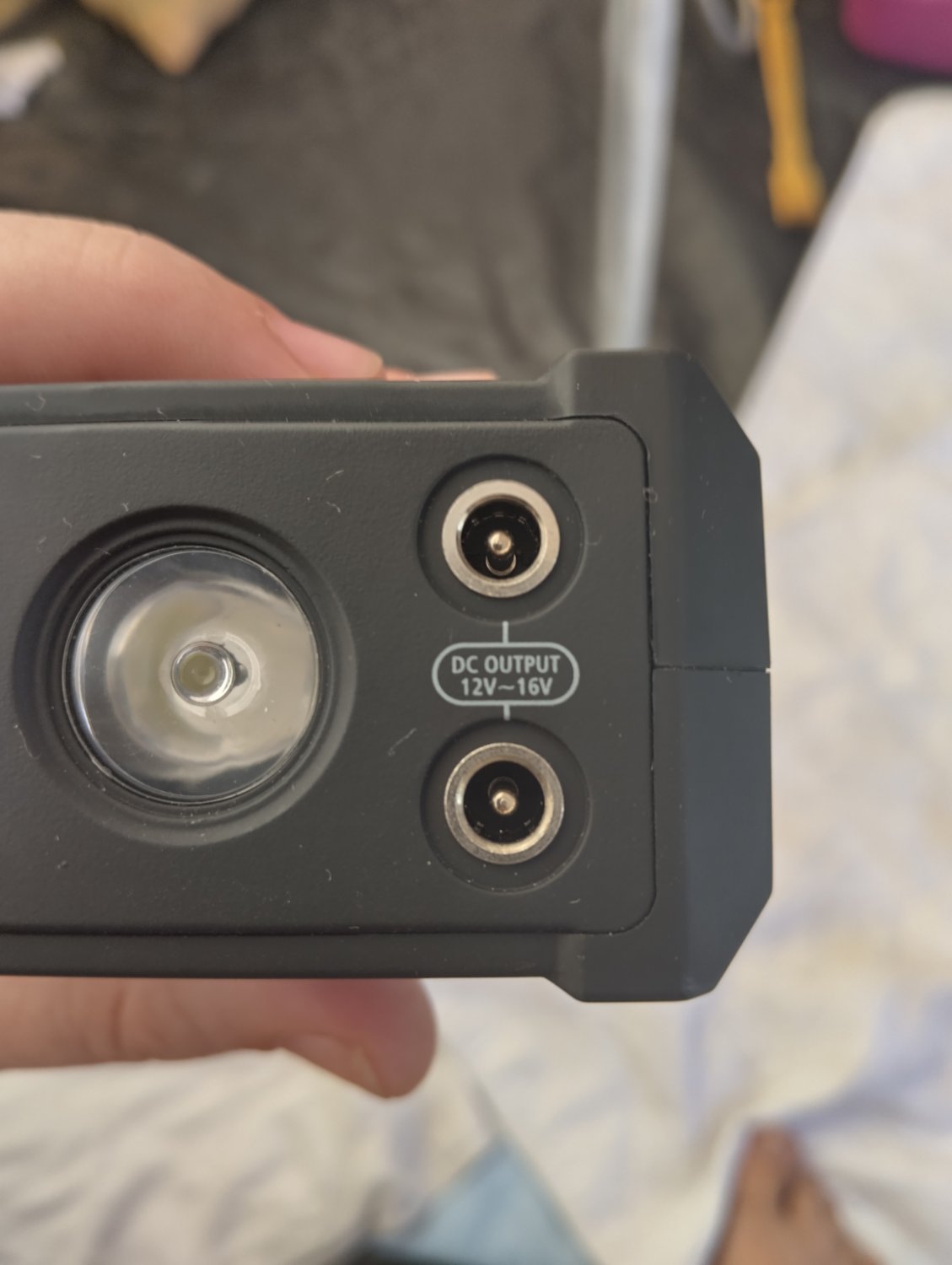
If you have one of those barrel plug inputs youre in luck. Go on amazon and buy one of these to turn those jacks into car cigarette plug inputs.

Then get a really nice usbc-pd car charger. I don't actually have one but I like anker and trust their 100w pd charger would be high quality. You can go cheaper if you only need 65w or lower.
Thanks. Lighting has been an ongoing puzzle I'm figuring out. I originally went with rechargeable Luci light it was really nice warm bright lighting but expensive and failed within a season. Currently I'm using a cheap 5v plastic led light bulb that plugs into regular usba slot. Its enough to see what you are doing comfortably. But really the average person whos used to house bulbs including me wants the luxury of bright lighting. For now I've been firing up the AC inverter to run a nice lamp. However I have been considering making my own 12v light fixture with 12v e26 bulbs that plugs into either car cig plug or usbc-pd.
In this picture is marked all the parts of an LED circuit that convert AC Into DC. It takes up about 40% of the board. Its much easier to power LEDs directly.
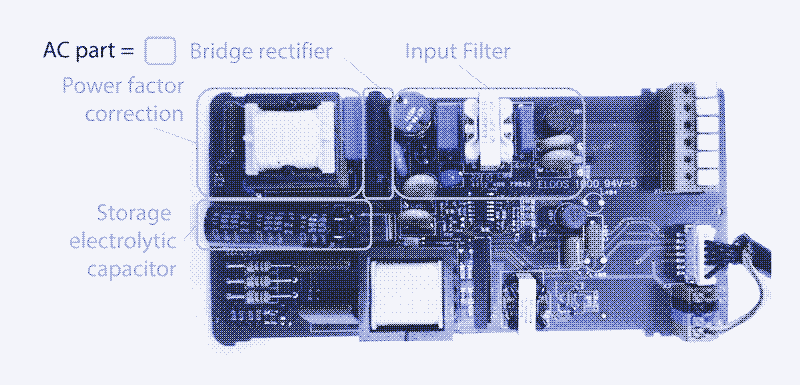
One of DCs main issues is transmission distance. Its hard to say for your case without details but its a good possibility. If you have a volt meter and know how to use it check the voltage at the start of the run and compare it to the end of the run and see how much the voltage has dropped. If your trying to push 12v over 20-30ft I would say theres a good chance of it being too little voltage over too far a length. Wire diameter is also a factor if its very small gauge wiring.
Im happy to explain pastermil. So first off let's talk power.
Electrical Power Systems
Most off-grid electrical systems have a few major components.
-
A device that generates electrical energy
-
A battery that stores excess electrical energy for later
-
A charge controller which regulates the incoming raw electrical power from the generator as it charges up the battery, and smooths out the battery energy output
-
A power distribution interface which allows for connecting appliances to the batteries in a safe standardized way.
My particular electric system has a 200w 28v solar panel for power generation, two 20ah lifepo4 batteries connected to double capacitance, and the charge controller doubles as a very basic interface with two usba slots and a car cigarette port.
AC vs DC
Now let's talk about AC and DC. Theres essentially two kinds of electrical power people deal with.
The difference between Alternating Current and Direct Current is in the way the power flows. Direct current moves in a straight path. Alternating current moves power back and forth in three perfectly spaced cycles.
AC The one most people are more familiar with is AC power. it comes to your home from power plants through power lines and transformer boxes. You move around extension cords and plug the three prong outlets into a wall.
Alternating Current (three phase) power is very easy to transmit long distance however its very high voltage. So only certain power hungry devices like kitchen appliances, washing machines, dryers and AC compressors use it directly. Most of your consumer home devices need to convert AV power down into more manageable DC power.
DC Offgrid electrical systems with batteries are Direct Current by nature. All your power comes from the battery banks. The power moves straight from battery terminal negative to positive. It flows right through your appliances in one way out the other.
The battery banks tend to be arranged into 12v, 24v, or 48v depending on the systems power draw and transmission needs.
The popular standards for delivering direct current are:
-
5v 2.4a usb (15 watts)
-
12v 10a car cigarette plugs (120 watts, can be rated to supply 24v fused 15a I believe though not common at all)
-
circular dc barrel plug connectors, the most common size is 5.5mmx2.5mm but there are dozens if not hundreds of slightly different barrel plugs. Part of what makes usb so great is reducing arbitrary manufacturing complexity like this.
-
usbc-pd various voltages depending on charger, cable, and device at up to 100w for current protocol.
-
solar quick connects tend to be for connecting and transmitting high voltage DC power to charge controllers and power banks. Its worth mentioning but not that relevant to what were talking about.
Most consumer devices in your home dont actually use wall outlet AC power directly, it uses wall power thats been converted and stepped down to DC power.
Desktop computer power supplies, Laptops, monitors, vaporizers, led lights, DVD players, audio speakers, your phone. everything that can powered by usb and batteries. Everything that has barrel plug inputs and power bricks plugging into it.
If you look closely on the power bricks plugged into the appliance you'll see that it has an input and output voltage rating. The input tends to be 120vac here in america 240v over the pond, and the output tends to be either 5v, 9v, 12v, 15v or 20v DC usually up to 5 amps.
Device vs Voltage Examples
Laptops and computer monitors tend to be 20v, fast charging smart phones and the Nintendo switch docked are 15v, very bright home LED lights can be bought that are powered at 12v directly, the ps2 could be powered with 9v, and most usb devices charge at standard 5v. Would you like to guess which voltage profiles the USBC-PD protocol is capable of? Its all of them.
Energy Conversion Efficency Losses
Now let's discuss energy efficiency. Converting from AC to DC eats up some of your power. So does converting from DC to AC. And its not small losses either, each time you convert its about a 15% total loss in efficency.
This loss through conversion doesn't matter when you pay cents on a kilowatt and have unlimited power at the tap. It adds up very quickly when you have a limited power supply and every watt hour counts.
Let's say I want to power a laptop on my offgrid DC system and my only means of powering it is the AC power brick cable that it came with. I would need to:
- Convert the DC power of the batteries to AC through an inverter. 15% efficency loss.
- Then convert that power right back down into slightly different DC with the power brick plugged in. 15%% efficency loss.
- The inverter and power brick are both parasitic draws. They eat a bit of power just sitting there even if nothing is being powered. Lets add 5% total system efficency loss each.
Add these up and you get 30-40% of your power eaten away by this needless double converting. Wouldnt it be really nice if we could convert the battery DC voltage directly to the appliance DC voltage without those power hungry inverters and transformers?
What DC-to-DC Converters Are
Thats where dc to dc converters come in. They can convert one DC voltage to another. They still introduce efficency loss but way way less only 10% total.
Traditionally you would hope your device had a commercially available 3rd party travel adapter for 12v car batteries. The dc to dc converter is built in and uses car plug.
If you were SOL you has to wire up boost converters to raise up voltage and add resistors in series to lower it. You ever try to wire and solder your own circuts before? Its a tedious experience. Imagine doing that for each device voltage. Oh wait, you dont have to. Here's what that looks like.
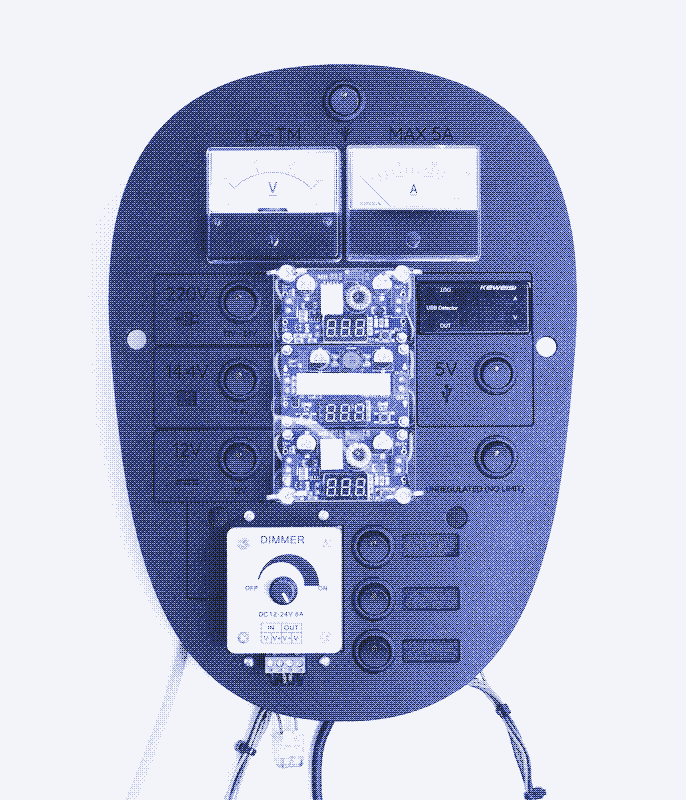

A USBC-pd 100w charger that plugs into a cigarette port or is built into a power bank can convert a batteries 12vDC into 5v, 9v, 12v 15v, and 20v dynamically depending on the device.
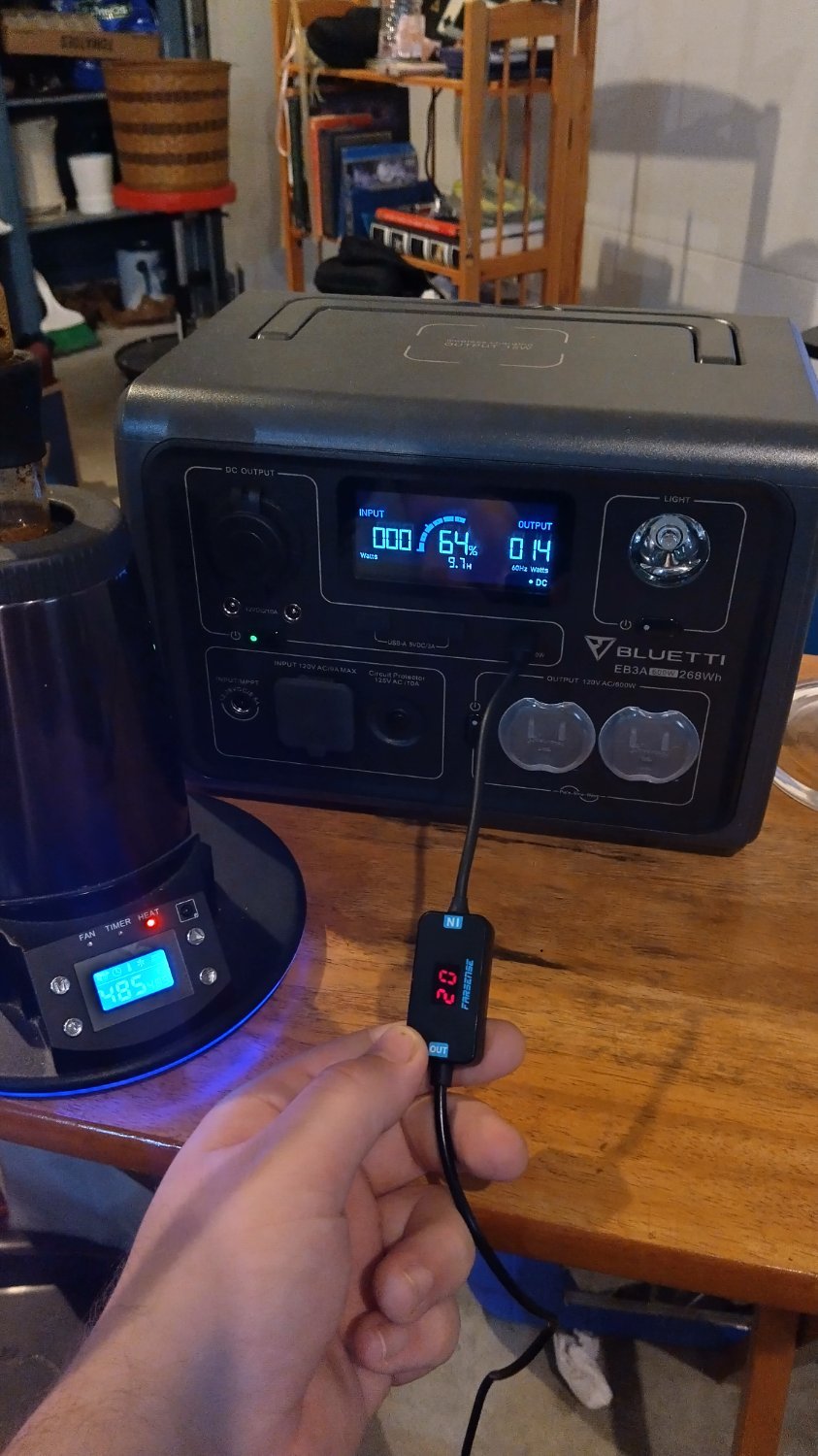
Do you know how magical that is? How much trouble that saves when it comes to mcguyvering a DC appliance that only came with AC cable to supply proper power directly? All I need is a 10$ usbc-pd to barrel plug cable that manually selects the voltage needed and some barrel plug adapter bits to fit into the appliance. Energy efficent and simple wiring. All the dynamic controller stuff is abstracted away in a safe way. Powerful enough to deliver 100 watts of power, and its going to be more powerful over time.
Ha, fat chance! Your centipede would be discretely drone striked very quickly and the jumbo-wumbo gun research would be used to fuel a new division of the military industrial complex before NATO ever got a chance to add it to the no-no list.
Usbc-pd is an absolute game changer as an off grid person. The fact a 100w charger can act as a dc to dc converter with up to five output voltages, at up to 100 watts is crazy. And that the protocol automatically detects and communicates the proper voltage is very convinent. The problem is that usbc-pd 100w chargers are expensive and you need to know what you are doing if you want to diy power appliances with it.
Its really nice to have a standardized cable that just works and can be plugged in both ways. We really are approaching a Universaal Cable after a quarter century of RnD.
You eat this mandelbrot set right now mister or theres no desert for you!
You're welcome Rai I appreciate your reply and am glad to help inform anyone interested.
The uncensored General Intelligence (UGI) leaderboard ranks how uncensored LLMs are based off a decent clearly explained metric.
Keep in mind this scoring is different from overall general intelligence and reasoning ability scores. You can find those rankings on the open llm leaderboard.
Cross referencing the two boards helps find a good model that balances overall capability and uncensored-ness within your hardwares ability to run.
Again mistral is really in that sweet spot so yeah give it a try if you are interested.

Hello there, I'm currently doing my first ever night of dispersed camping at a local national forest here in USA.
I plan to have this trip go two weeks, though I will be happy enough if I can make it to one without issue. After I'm done here I'll go sightseeing at a big state attraction that my parents always talked about.
The only camping I ever knew about was campgrounds where you pay money for a site or a cabin. I had no idea that dispersed camping was a thing.
In certain public lands you are allowed to just park off the road and camp out for a certain amount of time. Each place has their own rules and exceptions but its generally 2 weeks before you have to move a couple miles.
I'm essentially allowed to live here in nature free of charge for as long as I like. I just need to observe and respect the rules and limits of the state. The idea of doing this makes me feel a sense of freedom that I really needed in my life.
The van is pretty much converted out. Ive got a comfy bed. Ive got enough solar panel power for charging devices, keeping lights on, and coffee in the morning (theoretically). Ive got propane heating. Combine that with food, water, clothes, and cleaning supplies to make for the bare minimum of a comfy existance.
Despite all that, I'm out of my comfort zone. All the preparation in the world couldn't offset this feeling I have right now. The feeling of being in an unfamiliar new place and unsure if I'll be okay. Perhaps a real adventure requires at least a dash of uncertainty.
Its dark and quiet in a way I'm not used to. Stillness is a little unsettling when youre used to noise and commotion. I'm also right off a busy ish road so theres a car passing every now and again which is a little noisy but not unwelcome.
If something does go wrong I'm parked in a way that I can just turn the key and go. I need to clear the way to driver seat a little better currently blocked by food bag. All my windows are covered well so nobody can really peek at me. Not that I think anyone is out here to peek in.
I realize now that my sneakers arent exactly meant for off path forest exploration. I will get some good boots for the next trip. Im an overthinking planner type person so its fustrating to forget things like this. But before I left I told myself that I wasn't going to be able to think of every detail, and to just try my best and learn from the experience. I'm going to make mistakes and learn as I go and thats okay.
If you actually managed to read through this I thank you.

I wanted to share my current vaporizer setup with you guys.
To start, heres synthetic ruby balls over ceramic heater set to max temp.
Next is a custom herb extraction chamber device made from an omega wand, modified dynavap fat mouthpiece, and diy nectar collector herb chamber.
The extraction device inserts into the EQ forming an air tight seal with glass adapter. The herb chamber sits directly above the ruby heater balls.
Finally some glass is added on top. Arizer solo stems work well.
Mistral Small 22B just dropped today and I am blown away by how good it is. I was already impressed with Mistral NeMo 12B's abilities, so I didn't know how much better a 22B could be. It passes really tough obscure trivia that NeMo couldn't, and its reasoning abilities are even more refined.
With Mistral Small I have finally reached the plateu of what my hardware can handle for my personal usecase. I need my AI to be able to at least generate around my base reading speed. The lowest I can tolerate is 1.5~T/s lower than that is unacceptable. I really doubted that a 22B could even run on my measly Nvidia GTX 1070 8G VRRAM card and 16GB DDR4 RAM. Nemo ran at about 5.5t/s on this system, so how would Small do?
Mistral Small Q4_KM runs at 2.5T/s with 28 layers offloaded onto VRAM. As context increases that number goes to 1.7T/s. It is absolutely usable for real time conversation needs. I would like the token speed to be faster sure, and have considered going with the lowest Q4 recommended to help balance the speed a little. However, I am very happy just to have it running and actually usable in real time. Its crazy to me that such a seemingly advanced model fits on my modest hardware.
Im a little sad now though, since this is as far as I think I can go in the AI self hosting frontier without investing in a beefier card. Do I need a bigger smarter model than Mistral Small 22B? No. Hell, NeMo was serving me just fine. But now I want to know just how smart the biggest models get. I caught the AI Acquisition Syndrome!

My first guitar string snapped and it launched a small circular pin somewhere. I looked up how to restring guitar strings and other peoples stringboard look different than how mine is set up. the pins I have aren't long and straight they are small circular things fitted into a small hole in the wood. What are these kinds of pins called? Can I upgrade to standard guitar pins?

List of icons/services suggested:
- Calibre
- Jitsi
- Kiwix
- Monero (Node)
- Nextcloud
- Pihole
- Ollama (Should at least be able to run tiny-llama 1.1B)
- Open Media Vault
- Syncthing
- VLC Media Player Media Server
I am a hobbyist computer and IT guy. Not professionally trained but I grew up with the technology and have been tinkering with them for years. I am still learning new things and enjoy deeping my understanding. Troubleshooting is often a great journey to discovering new insights.
Shelved in the basement was a desktop pc released in 2018. Ryzen 5 2600 6 core CPU, 24GB DDR4 RAM, and an AMD RX580. These days such specs are modest compared to the latest and greatest but still pretty good IMO. If I remember right, it was having some graphical issues probably caused by a hdmi cable or something. It was a long time ago, no idea why such a good PC ended up collecting dust. Oh well, as a silver lining this story is about giving the PC new life.
This week I began tinkering around with local AI. LLama 3.1 8b just got released; I have been having lots of fun learning with it on the laptop. Sadly my poor old thinkpad is just not meant for that kind of work. It was sloow to generate text and process information..
So remembering the 6 core desktop in the basement, the time felt right to dust off the PC and get it to do some useful computing. Unfortunately while the specs are powerful, the things wifi never worked right for some reason. I never thought much about it since the PC was situated next to a router with Ethernet as a connection. Now it needs to live significantly further away and rely solely on wifi for big file transfers.
On an internet connection where my laptops right next to it were getting hundreds of mbps download, the pc was getting 10mbps. Ive had metal cased desktops before and none of them were this bad connection wise. Something was seriously wrong bottlenecking an otherwise great setup. So at first I figured it must have been a linux driver issue or some kind of software bug. Spent hours installing the right drivers for my specific wifi card and troubleshooting via terminal. Didn't help any.
Then I figured maybe the card was bust and researched new wifi cards. I always thought wifi cards were little chips and antennas built into the motherboard. Not the case with this computer.
My first important discovery was that this computer had a huge wifi card mounted just underneath graphics card taking up its own slot in the back. This makes sense, if you want to upgrade to the newest wifi frequency in 10-20 years just pop a updated card into the slot.
My second important discovery was realizing the beastly wifi card had two little brass bits connecting out behind the PC. Threaded bits. Hey I know these, they are male coaxial bits.... For an... antenna.... facepalm
The realization hit me like a club. Oh... OH. YOOO IT NEEDS ANTENNAS, DUDE. I had been using a radio technology with either no antenna or an inbuilt one so awful it might as well be malfunctioning.
I felt like an idiot, have seen the back of that PC many times but for some reason just never noticed or thought about the coaxial bits and what they could be for. Oh well lets just order some cheap sticks and hope it helps.
So I with the cheap set of antennas in hand, I screwed them on. Honestly expected it not to do anything because its never that simple. Fired up speedtest before and after installation. Before antennas was 10mbps up and down After installing the antennas >200mbps down and >100mpbs up. Yeeeeah looks like that took care of the issue right away.
In the future ill look on the back of my big desktops and see if they could be easily upgraded with a set of antennas. The more you know!
Hello, I am trying to get some advice from experienced electricians and engineer workers on what jobs could be a good fit for my experience and skill sets. As well as advice on how to do a better job picking work that won't screw me over.
I am a nationally certified (NOCTI) Electromechanical Engineer. I got mentally/emotionally chewed up and spit out after working as a maintenance technician for a couple years as a young 'n dumb kid right out of school. I have kept my electrical skills sharp enough to wire up my own offgrid solar DC systems. I remember enough theory to do calculations and read schematics. My maintenance days have me somewhat familiar with electrical wiring, air duct systems, mechanical drives, pneumatic/hydraulic systems, PLC automation, and repairing broken parts with all manner of tools. I enjoy the feelings of satisfaction and capability that comes from successfully putting together and maintaining an efficient functioning system.
But im kind of scared to get back into the career field knowing how dangerous it can be (Ive mainly worked on 480v systems) and how little money I was paid before. On one hand I feel like I should use my highly technical skills and further a real career. However on the other hand every company i’ve ever worked for has screwed me over with promised training that never happened, severely understaffed stressed out maintenance teams who didn’t have the time or energy to spend teaching a newbie, and OSHA violations so egregious the inspectors were surely bribed.
I guess im trying to ask where I went wrong. What job paths are a better use of my skills that isn't so mentally and physically taxing? What are some red flags to look out for? What is contracting work like? Should I try to get into a union? I really don’t know if I want to get back into this career field and I don’t know if I want to commit to a 2 year apprenticeship contract.
Im kind of an environment guy who cares about clean energy and would love to be helping out the planet a little through my work sometimes I fantasize about working on solar arrays and renewable energy stuff.
Im pretty good with computers and IT, I use linux daily, can ssh into a remote server, port forward, and have set up some local services on my own network. I am a main developer of an open source project decently familiar with the basics of programming in lua and commiting with git. A lot of the older guys have appreciated my help navigating companies old poorly organized intranets for schematic scans and work orders.
I am in my mid 20s, single and from the US but willing to travel.

Managed this rig up a homemade induction heater from a 10$ board off amazon +7$ cigarette plug terminal cable
Induction heater is for my dynavap, the commercial ones are quite expensive and I figured it would be a cheap and easy project to make one up
I made a quick YouTube video showing the IH off :)

The Orb
The spherical bong is the Orb V2. Its an extremely simple yet highly functional piece that has TWO female intakes connected to a matrix perc. This allows you to combine smoke or vapor from two different sources with one inhale.
The orb also comes with a female outtake, a 2' long whip, and an insertable mouthpiece which opens up many options for switching between mouthpiece, whip or even connect to another piece for further filtration such as the intake of a bong filled with ice. In this shot I have a custom made 3' long silicon whip one end has the smoked glass whip that comes with orb whip and other side is arizer whip mouthpiece.
The Air Max
The cylindrical black device in the top intake port is the Arizer Air Max, a well engineered electronic dry herb vaporizer. Essentially it is a miniature electric oven which bakes your herb to produce vapor. Vapor is healthier than smoke, taste better, and you get decarbed flower as a usable byproduct instead of ashes which is used for making edibles and other things. Electronic dry herb vaporizers excel at ease of use and precise temperature control.
The Arizer air max allows you to swap out the glass pieces. Instead of a mouthpiece I have a 14mm Water Pipe Adapter (WPA) inserted into it which allows it to connect to the larger top insert of the orb.
The Dynavap M+ 2023
The metallic stick in the smaller 10mm intake port is the Dynavap m+ 2023. It is also a dry herb vaporizer, but is instead heated through torch or induction heater. The Dynavap allows for complete vapor extraction of herb .1G of herb in a Dynavap cal fill the orb with milky white clouds. Its tip acts both as a mouthpiece and a built in 10mm WPA allowing it to be inserted into the smaller 10mm intake of the orb.
Im not really a political person but the one thing I do care about is pot. Which candidate is most supportive of federally legalizing or at least bumping down the schedule 4 drug status of pot.

I wanted to power my extreme with my powerststion directly since its a 20v DC device, however arizer doesn't make car adapters. So I got clever.
This setup makes good use of my power stations 100w USBC-PD charger port by utilizing a special USBC-PD to DC input cable that lets you manually select the voltage you want the charger to put out. This is necessary since the extremeq doesn't have the tech to communicate with the charger, so this device communicates in its stead.
USBC-PD 100W can put out 20vdc at 5a, the extremeq consumes 20vdc at 1-3a, comfortably below the spec limits.
This is an excellent way to power your extremeq and other similarly power rated desktops right from a dc system/ portable battery without the horrible inefficiency of converting to ac just to convert back to DC.
Smokey's Simple Guide To Search Engine Alternatives
This post was inspired by the surge in people mentioning the new Kagi Search engine on various Lemmy comments. I happen to be somewhat knowledgeable on the topic and wanted to tell everyone about some other alternative search engines available to them, as well as the difference between meta-search engines and true search engines. This guide was written with the average person in mind, I have done my best to avoid technical jargon and speak plainly in a way most should be able to understand without a background in IT.
Understanding Search Engines Vs. Meta-Search Engines
There are many alternative search engines floating around that people use, however most of them are meta search engines. Meaning that they are a kind of search result reseller, middle men to true search engines. They query the big engines for you and aggregate their results.
Examples of Meta-search engines:
Format: Meta Search Engine / Sourced True Engines (and a hyperlink to where I found that info)
Duckduckgo / Bing has some web crawling of it own but mostly relies on Bing
Ecosia / Bing + Google a portion of profit goes to tree planting
Kagi / Google, Mojeek, Yandex, Marginalia, Requires email signup, 10$/month for unlimited searches
SearXNG / Too many to list, basically all of them, configurable, Free & Open Source Software AGPL-3.0
4get / Google, Bing, Yandex, Mojeek, Marginalia, Wiby Open source software made by one person as an alternative to SearX
Qwant / Bing Relied on Bing most of its life but in 2019 started making moves to build up its own web crawlers and infrastructure putting it in a unique transitioning phase.
True Search Engines & The Realities Of Web-Crawling
As you can see, the vast majority of alternative search engines rely on some combination of Google and Bing. The reason for this is that the technology which powers search engines, web-crawling and indexing, are extremely computationally heavy, non-trivial things.
Powering a search engine requires costly enterprise computers. The more popular the service (as in the more people connecting to and using it per second) the more internet bandwidth and processing power is needed. It takes a lot of money to pay for power, maintenance, and development/security. At the scales of google and Bing who serve many millions of visitors each second, huge warehouses full of specialized computers known as data centers are needed.
This is a big financial ask for most companies interested in making a profit out of the gate, they determine its worth just paying Google and Bing for access to their enormous pre-existing infrastructure without the headaches of dealing with maintenance and security risk.
True Search engines
True search engines are honest search engines which are powered by their own internally owned and operated web-crawlers, indexers, and everything else that goes into making a search engine under the hood. They tend to be owned by big tech companies with the financial resources to afford huge arrays of computers to process and store all that information for millions of active users each second. The last two entries are unique exceptions we will discuss later.
Examples of True Search Engines:
Bing / Owned by Microsoft
Google / Owned by Google/Alphabet
Mojeek / Owned by Mojeek .LTD
Yandex / Owned by Yandex .INC
YaCy / Free & Open Source Software GPL-2.0, powered by peer to peer technology, created by Michael Christen,
Marginalia Search / Free & Open Source Software AGPL-3.0, developed by Marginalia/ Martin Rue
How Can Search Engines Be Free?
You may be wondering how any service can remain free if it needs to make a profit. Well, that is where altruistic computer hobbyist come in. The internet allows for knowledgeable tech savvy individuals to host their own public services on their own hardware capable of serving many thousands of visitors per second.
The financially well off hobbyist eats the very small hosting cost out of pocket. A thousand hobbyist running the same service all over the world allows the load to be distributed evenly and for people to choose the closest instances geographically for fastest connection speed. Users of these free public services are encouraged to donate directly to the individual operators if they can.
An important take away is that services don't need to make a profit if they aren't a product to a business. Sometimes people are happy to sacrifice a bit of their own resources for the betterment of thousands of others.
Companies that live and die by profit margins have to concern themselves with the choice of owning their own massive computer infrastructures or renting lots of access to someone elses. You and I just have to pay a few extra cents on an electric bill that month for a spare computer sitting in the basement running a public service + some time investment to get it all set up.
As Lemmy users, you should at least vaguely understand the power of a decentralized service spread out among many individually operated/maintained instances that can cooperate with each other. The benefit of spreading users across multiple instances helps prevent any one of them from exceeding the free/cheap allotment of API calls in the case of meta-search engines like SearXNG or being rate limited like 3rd party YouTube scrapers such as Invidious and Piped.
In the case of YaCy decentralization is also federated, all individual YaCy instances communicate with each other through peer-to-peer technology to act as one big collective web crawler and indexer.
SearXNG
I love SearXNG. I use it every day. So its the engine I want to impress on you the most. SearX/SearXNG is a free and open source, highly customizable, and self-hostable meta search engine. SearX instances act as a middle man, they query other search engines for you, stripping all their spyware ad crap and never having your connection touch their servers.
Here is a list of all public SearX instances, I personally prefer to use paulgo.io All SearX instances are configured different to index different engines. If one doesn't seem to give good results try a few others.
Did I mention it has bangs like DuckDuckGo? If you really need Google like for maps and business info just use !!g in the query.
Other Free As In Freedom Search Engines
Here is Marginalia Search a completely novel search engine written and hosted by one dude that aims to prioritize indexing lighter websites little to no JavaScript as these tend to be personal websites and homepages that have poor Search Engine Optimization (SEO) score which means the big search engines won't index them well. If you remember the internet of the early 2000s and want a nostalgia trip this ones for you. Its also open source and self-hostable.
Finally, YaCy is another completely novel search engine that uses peer-to-peer technology to power a big web-crawler which prioritizes indexes based off user queries and feedback. Everyone can download YaCy and devote a bit of their computing power to both run their own local instance and help out a collective search engine. Companies can also download YaCy and use it to index their private intranets.
They have a public instance available through a web portal. To be upfront, YaCy is not a great search engine for what most people usually want, which is quick and relevant information within the first few clicks. But, it is an interesting use of technology and what a true honest-to-god community-operated search engine looks like untainted by SEO scores or corporate money-making shenanigans.
Free As In Freedom, People vs Company Run Services
I personally trust some FOSS loving sysadmin that host social services for free out of altruism, who also accepts hosting donations, whos server is located on the other side of the planet, with my query info over Google/Alphabet any day. I have had several communications with Marginalia over several years now through the gemini protocol and small web, they are more than happy to talk over email. have a human conversation with your search engine provider thats just a knowledgeable every day Joe who genuinely believes in the project and freely dedicates their resources to it. Consider sending some cash their way to help with upkeep if you like the services they provide.
Self-Hosting For Maximum Privacy
Of course you have to trust the service provider with your information, and that their systems are secure and maintained. Trust is a big concern with every engine you use, because while they can promise to not log anything or sell your info for profit, they often provide no way of proving those claims to be true beyond 'just trust me bro'. The one thing I really liked about Kagi was that they went through a public security audit by an outside company that specializes in hacking your system to find vulnerabilities. They got a great result and shared it publically.
The other concern is that there is no way to be sure companies won't just change their policies slowly over time to creep in advertisements and other things they once set out to reject once they lure in a big enough user base and the greed for ever increasing profit margins to appease shareholders starts kicking in. Companies have been shown again and again to employ this slow-boiling-frog practice, beware.
Still, If you are absolutely concerned with privacy and knowledgeable with computers then self hosting FOSS software from your own instance is the best option to maintain control of your data.
Conclusion
I hope this has been informative to those who believe theres only a few options to pick from, and that you find something which works for you. During this difficult time when companies and advertisers are trying their hardest to squeeze us dry and reduce our basic human rights, we need to find ways to push back. To say no to subscriptions and ads and convenient services that don't treat us right. The internet started as something made by everyday people, to connect with each-other and exchange ideas. For fun and whimsy and enjoyment. Lets do our best to keep it that way.
From what I can gather this conflict as been going on a long time and the Hamas group has existed for a while too. Why are all the news cycles suddenly focusing on this the past few weeks?







